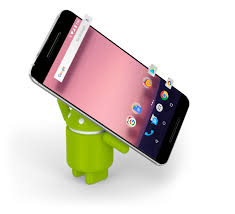
The "insufficient storage available" is probably one of the most annoying messages one ever wishes to see popping up on the display of their Android phone or tablet especially that time you are trying to download a new app, add anew song to your playlist or even capture a lifetime moment using your phone.
well, if you ever find yourself in this situation, here are a few tips to keep you back on track enjoying every minute of your android phone.
1 Delete photos and videos
Photos and videos take up a substantial amount of space - tap Storage and Settings to check on your device.
still, you can back all this up - but before you do that, do a bit of cleaning and remove all those blurred, pointless and dull pictures you don't really need.
2:Delete apps you're not using
some apps take up big chunks of space on your device that you can claim back if you don't use them any more.
How to go about it.
Open the Settings app then tap 'Storage' and then 'Apps' to see the apps taking up space on your Android device, with the biggest disk hoggers at the top. to unistall these apps, go to the Apps menu from Settings, tap any of the apps listed, and select 'Uninstall'.
you can back up data incase you might need the app in future
3:Delete app caches and data
deleting the cache and databases for apps helps you keep certain apps on your system but cut down on the amount of space they take up.
how to go about it:
go to Settings then Storage > Apps and you'll see two options for each one - Clear Data and Clear Cache
Clear Data removes personalized data held by the app - it's like uninstalling it and reinstalling it. In the case of twitter, for example, you'd find yourself logged out
Clear Cache just empties the temporary cache of files held by the app so it can start up more quickly, basically bits of the app kept in memory. Clear the cache and the app will launch more slowly the next time you use it, but nothing else should've changed.
4 Delete offline playlists
Open up Spotify, Google Play Music, Apple Music or whatever you have on your phone and see if there are any cached playlists you do without for a while.
Podcast apps are also known for keeping large files around, though it's not really the app's fault if you haven't deleted old episodes you've listened to. Most podcast apps come with auto-cleanup options that erase episodes when they've been played, so see if your app of choice has anything like this available, or just delete the podcasts manually.
5:Syncing photos and videos to the cloud
most times, we do not want to delete anything permanently, we just want to get it off our phones at that particular moment. Fortunately, Google Photos does a great job of this, and you can see which pictures and videos have already been synced to the cloud by launching the app and choosing Settings then Backup & sync from the menu.
There's also a dedicated 'Free up space' entry on the menu - this searches your phone or tablet for photos and videos that have already been backed up, and then asks if you want to erase the copies stored on your device. Your photos and videos will still be safe and sound in the cloud, though they may have been resized, depending on the backup options you've chosen in Google Photos.
You can actually get this to all happen automatically: from Settings tap 'Storage' then 'Manage storage' to find the Smart Storage option.
There are apps, like Dropbox, which can do a similar job for you, syncing images and video clips to the web automatically so you can delete the originals.
6:Delete data from your browser
giving your mobile browser a good clear-out is another way you can free up some space in your phone.
in fact you can do this job through the clear cache and clear data functions we mentioned a few steps ago, although that method doesn't give you much control over what's wiped and what isn't.
7:Delete other types of files
More recent (6.0+) versions of Android have a built-in file manager too: from Settings choose 'Storage' and then 'Explore'.here you will find that, There are various other types of files you can get rid of on your device.
To delete a file, long-press on it then tap the trash can icon. You can select several files at once after the first long-press.
NB: do not delete any files you're not sure about - you might break one or two of your apps .









































